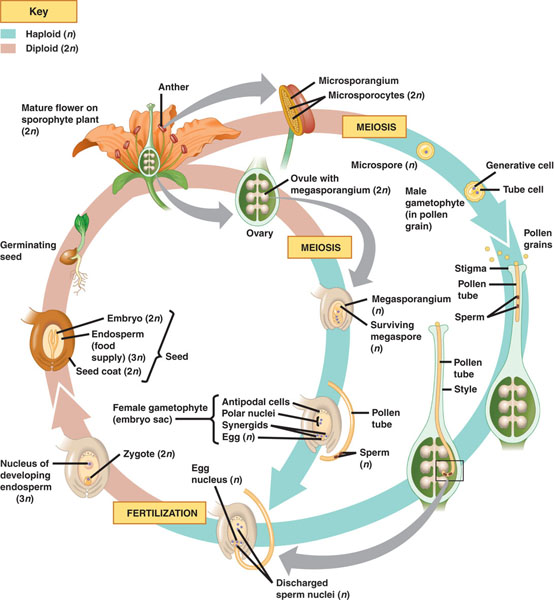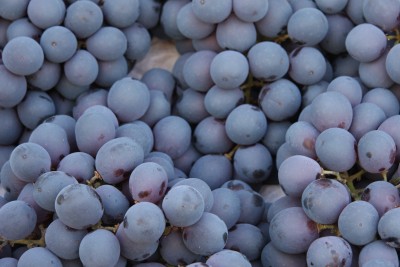Reproduction
 Vitis labrusca, like most other plants, has an alternation of
generations life cycle. This means there is an alternation between a haploid
(gametophyte) and diploid (sporophyte) phase. As a seed vascular plant, the
sporophyte stage is dominant. It is very difficult to see the gametophyte
generation at all.
Vitis labrusca, like most other plants, has an alternation of
generations life cycle. This means there is an alternation between a haploid
(gametophyte) and diploid (sporophyte) phase. As a seed vascular plant, the
sporophyte stage is dominant. It is very difficult to see the gametophyte
generation at all.
There are also plants that can have both the male and female parts on the same plant (monoecious) and plants that have only one sex per plant (dioecious). Vitis labrusca is a dioecious shrub. Since one plant can only be male or female, another plant of the opposite sex needs to be within fertilizing range in order for the female plant to become fertilized and produce fruit.
Female Plant: In the female plant, an ovule(egg) is produced in the ovary of the flower. This is the site of fertilization.
Male plant: In the male plant, pollen (sperm) will be produced in a microsporangium. This pollen will them find its way to the egg of the female plant by a means of dispersal. This could be by wind, insects,(such as the (rusty patched bumblebee), birds, or other mammals.
Once the pollen fertilizes the egg, the zygote forms. The ovary surrounding the zygote then grows into a fruit. The advantages of developing the fleshy fruit around the zygote, or seed, are: more protection, more nourishment, and the fruit attracts animals that can potentially disperse the seeds to be replanted and have the cycle start all over again.
< Nutrition Interactions & Sustainability >


